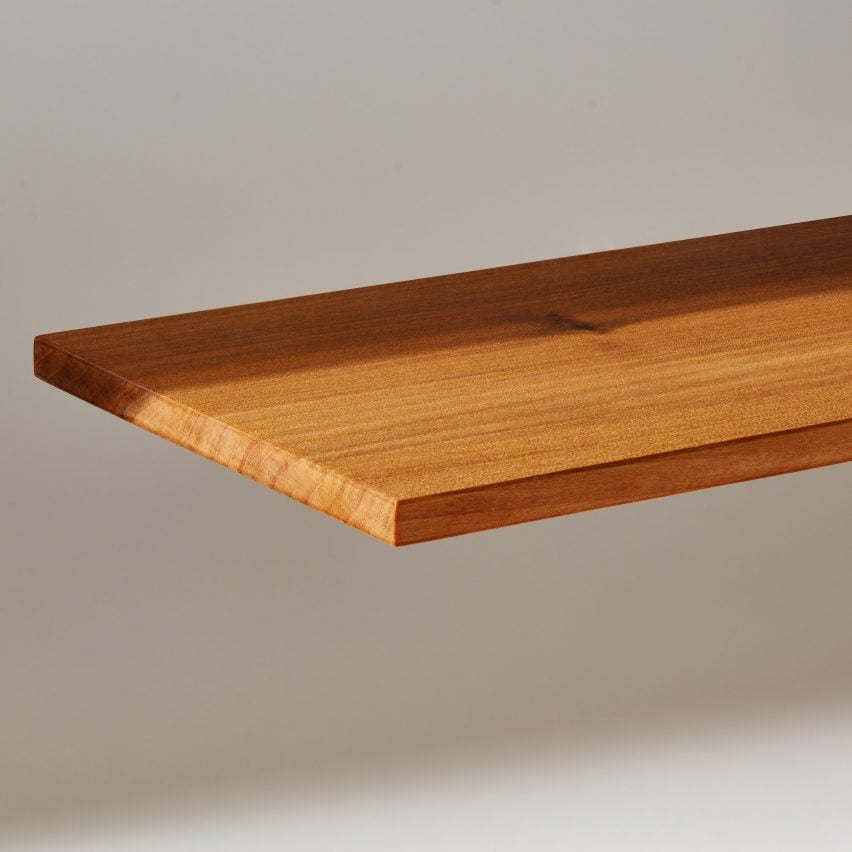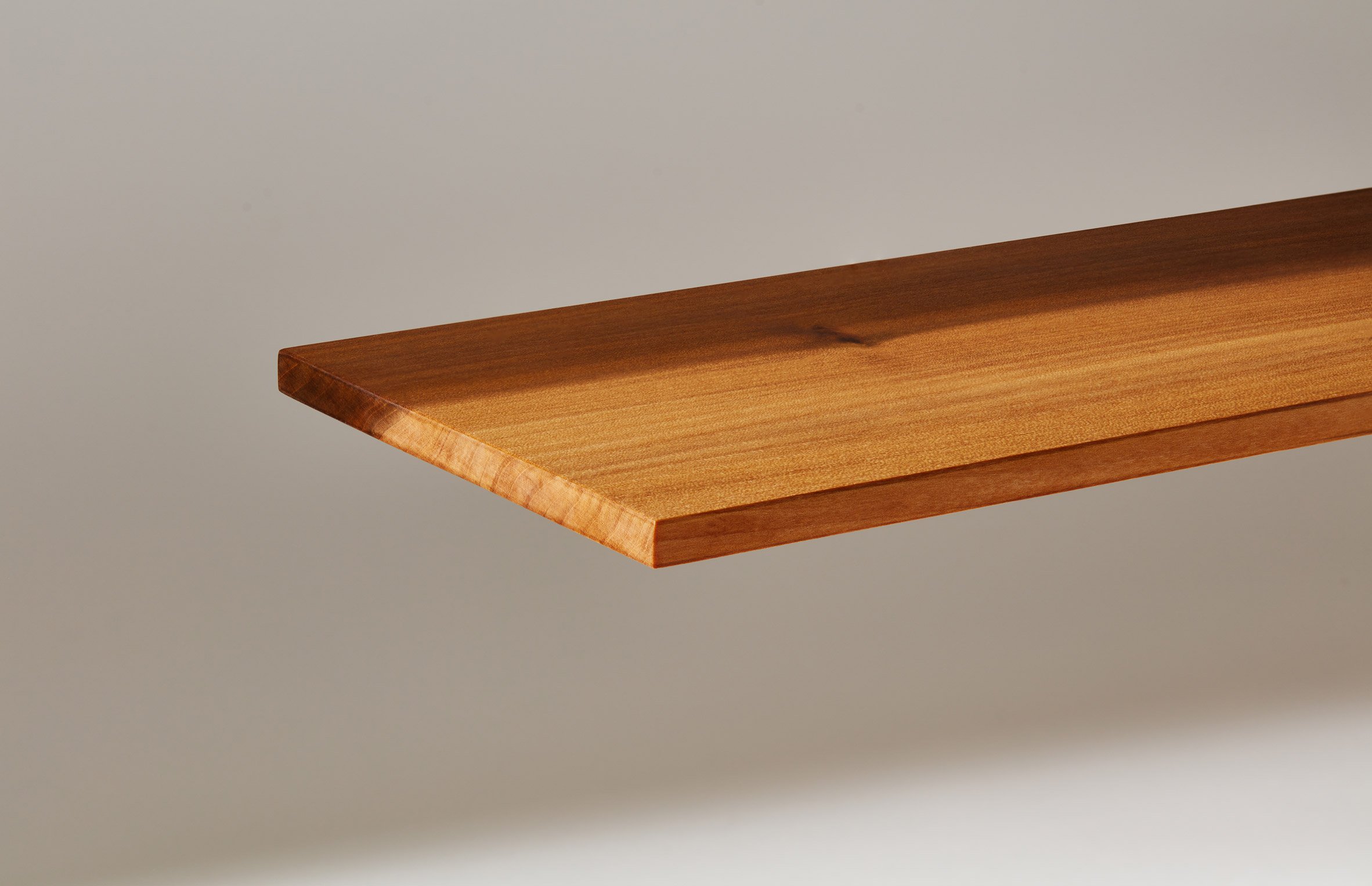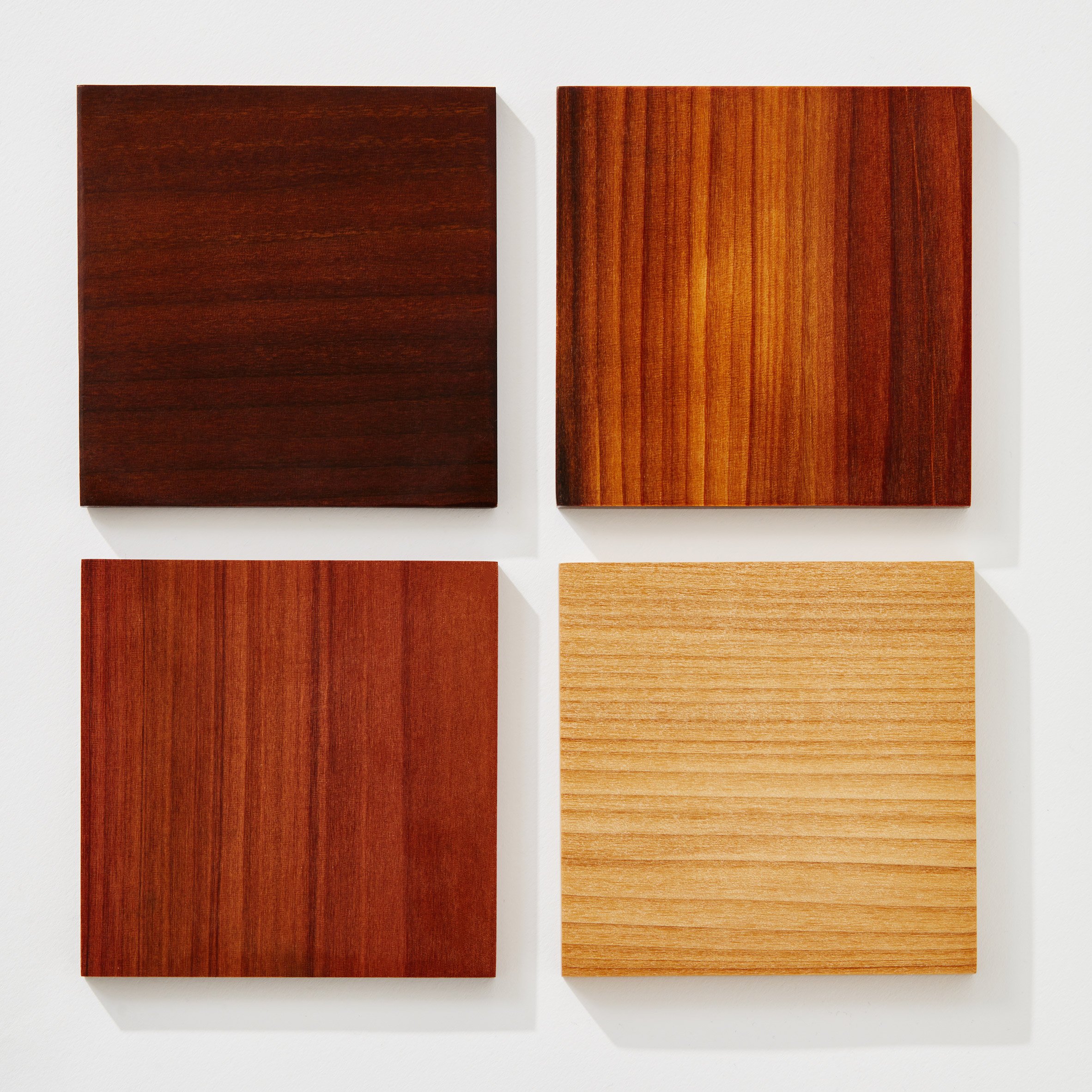
American start-up InventWood claims to have “reinvented wood from the inside out” with a patented process that restructures the material’s molecules to make it ten times stronger than regular wood.
InventWood developed Superwood as a more sustainable, lightweight alternative to concrete and steel in architectural applications.
The company claims that the material is up to ten times stronger than regular wood and six times lighter than steel, as well as being resistant to water, insects, mould and mildew.

“Superwood corrects all the flaws you have in wood, but it’s still a wood,” said InventWood CEO Alex Lau in a publicity video about the product.
“So you still get the benefits of wood but you eliminate most of the drawbacks and you take it to the level of performing like steel.”
The process used to create Superwood begins with the chemical modification of regular wood, which removes most of its lignin and hemicellulose while preserving the cellulose structure.

The wood is then compressed to squeeze out all of the air and imperfections. This stage causes hydrogen bonds to form between the cellulose fibres, increasing the wood’s density by up to four times.
InventWood’s COO Allan Bradshaw claims that the material’s main benefit is a strength-to-weight ratio that is up to ten times greater than that of steel.
“What that does is it allows you to reduce volume so you can get the same strength in a smaller piece,” said Bradshaw. “That allows for much more open space in construction.”
According to InventWood, other benefits of the high-strength wood include its Class-A fire rating, which makes it suitable for construction in fire-prone areas.
The material can be customised by polishing, shaping or coating it to meet specific design and application requirements. It can be installed using standard woodworking techniques and can also be painted, stained or varnished like regular wood.
“What Superwood enables is that biomaterials can become the default way to build,” said Lau. “Just as concrete and steel became the standard in many places, now we can say bio-based materials can be the standard – and society needs that.”
The technology was developed by Liangbing Hu, whose laboratory at the University of Maryland began experimenting with the molecular manipulation of wood in 2013.

In 2018, the lab created wood that was stronger than steel but six times lighter. Hu then licensed the technology to InventWood and helped to develop it for mass production.
Now, the company is preparing to begin shipments from its first commercial manufacturing facility in Frederick, Maryland.
Initial shipments are due to commence in the coming months, with a focus on lower-stress contexts such as facade and cladding applications for commercial and high-end residential buildings to begin with.
InventWood’s principal scientist, Dr. Jack Winterowd, suggested that Superwood offers the same benefits of scalability and consistency as materials like steel.
“We can think about the structural applications that would be involved with large buildings, where an ultra-strong, ultra-lightweight, eco-friendly Superwood material can replace steel and concrete,” said Winterowd.
“This isn’t just improved wood; it’s wood reinvented from the inside out.”
If used to replace steel in construction, the material could help to reduce the carbon footprint of buildings as it generates 90 per cent lower emissions and can act as a carbon store, the company claims.
Engineered wood, such as glulam and CLT, is already being widely used in structural applications for this purpose, as explored in Dezeen’s Timber Revolution series.
These mass timber products aren’t made by altering the wood at a chemical level. Instead, layers of timber are joined together using glue, dowels or other binders to form strong panels and beams.
The post Superwood is a chemically modified wood that is stronger than steel appeared first on Dezeen.